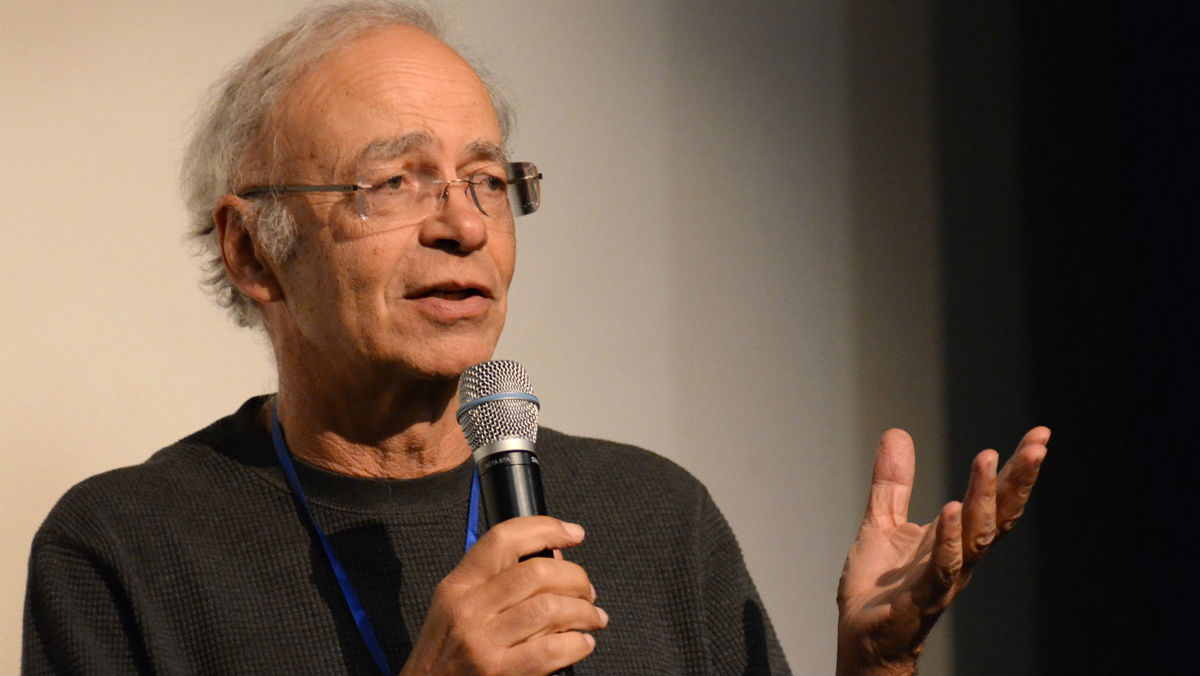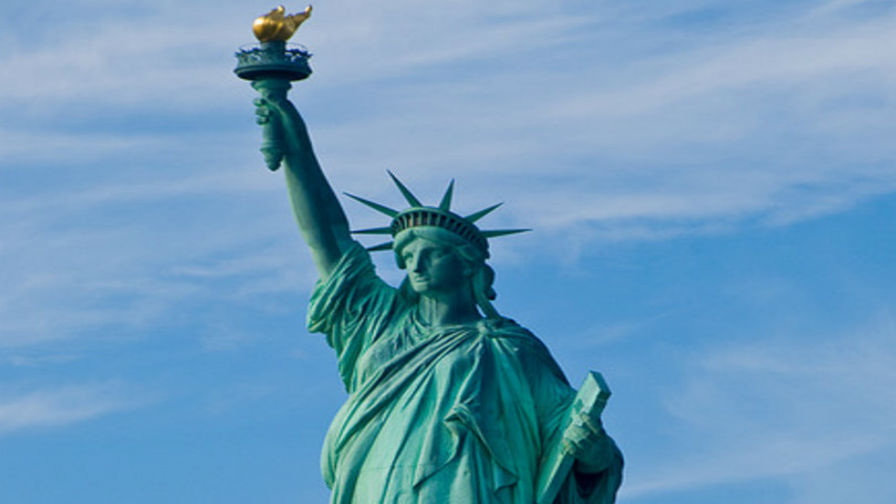Here’s an exercise: If there’s someone near you right now, ask them to define hope. Quickly. What did they say: was it motivational? Did it deal with future ambition, expectation, and desire? Historically, hope has not always had such sugary connotations, and at one point—not so long ago, actually—it was more about confronting suffering in the present than mentally projecting yourself forward to a time where you have overcome your suffering. Drawing from an 1886 painting by George Frederic Watts called ‘Hope’, which inspired Martin Luther King Jr.’s 1959 sermon ‘Shattered Dreams’, Andre C. Willis presents a view of deep hope, a method of facing adversity that is woven together from the African American Protestant tradition.
This video was filmed at the Los Angeles Hope Festival, a collaboration between Big Think and Hope & Optimism, a three-year initiative which supported interdisciplinary academic research into significant questions that remain under-explored.
Andre C. Willis: So what I can share with you today is not an answer to the question of “What is hope?” but I can share with you about how a tradition that I’m involved in studying and that I’m linked to has a take on what ways of hoping may be better or more useful than others.
So my understanding of this tradition that I have studied and engaged with for a few years now is the African American Protestant tradition of hoping, that’s crafted over centuries of despair and dehumanization. And I think it has something to teach our nation.
Our nation that has in some ways undermined this very tradition of hoping. And the nation in some ways has trivialized hope itself, made hope into something that’s largely a market-driven quest for getting our aspirations, for reaching our goals, for achieving our aims.
I think one of the things that not unpacking this distinction between Obama’s hopes and King’s hopes—based on the painting which I’m going to describe now—is it leaves us more vulnerable to romantic conceptions of hope. We tend to fall into this way of thinking about hope that’s more reflective almost of what Shelley called in 'Prometheus Unbound', 1822, he said he wants “to hope till hope creates from its own wreck the thing it contemplates.” It’s a beautiful line, right, and I’m susceptible and seduced by that kind of hope.
But when I think about King and Obama and this painting I tend to get more clear about what is deep hope, right. So I want to highlight quickly the distinctions between both King and Obama and then I’ll be done, because I think this will help us understand both what I’m trying to get at and where we are now. So first, King’s hope, his description of hope is always disappointed and never realized, while Obama’s hope guides us past disappointment and is realizable. So here we have a clear difference between the Protestant embrace of a tragic sense of life and the kind of democratic politics of hope that aims to resist the politics of cynicism. And that’s fine. So the important thing to remember though is that the difference in the Protestant embrace of tragedy attenuates our inclinations for happy ending. It works against that romantic conception that I argue, I pointed out Shelley was referencing in the 1822 'Prometheus Unbound' quote, right. Its romantic sense: to hope until hope reaches what it contemplates.
Second, King’s hope is a discipline of the present moment. It’s a social practice done in community with the aim of reminding us that our lives are always incomplete and unfinished. Our deep hopes will not come to fruition, is King’s point. In this way we might say that King’s hope is a way of relationship. It is a relating to suffering. It tells us to just keep going.
Obama’s hope on the other hand is the aspiration for the future. It’s a rational belief about the probability of attainment. Attaining one’s ambitions.
We might say that Obama’s hope attends to the pressures of achievement by affirming aspirations for the future. So I quickly want to caution you from taking what I’m saying as a way of thinking about Martin’s account as just another form of tragic hope, dark hope, melancholic hope, “I hope against hope”, hope of the hopeless, right. Because I think that I take King’s hope to simply be a reminder of the idea of the tragic in our life, the notion that our mortal days will not be fulfilled. So it’s dark in that sense, but I don’t want to pitch it as a dark hope, right. I want to pitch it as a deep hope. And when people go with melancholic hope or blues hope, I think they often end up romanticizing a kind of hope that seduces us into thinking there may be a hope without suffering. That is, the idea of a “dark” hope relies on the idea of a “light” hope, and that has all kinds of problems, right, analogically.
But just the fact that both things sort of seem like they have to exist together is misleading and it skirts the fundamental insight of Martin, which is to remind us of a certain kind of suffering.
Now for King, a man who we often associate with things like the 'I Have A Dream' speech, right, the song 'We Shall Overcome'. He’s telling us in ’59, ’63 and later on in ’68 he gives a sermon called 'Unfulfilled Dreams' where he continues this theme that all our hopes are blasted and our dreams are shattered.
In other words the person we think of as the amazing hoper and dreamer is really trying to tell us something much different. He’s trying to tell us our hopes are perfidious. As George Buttrick notes, “We die with half our music in us.”
So you might ask then, "What is the purpose of this sort of hope and why would I want to subscribe to it?” And that’s just it. This hope is not up for subscription. It’s a way of relating to suffering and facing the ultimate fact that we shall likely not achieve all of the promises of life. But this is just what life is, in this strand of Protestantism. It is not life’s failing.
King tells us that the tentacles of evil are always present, taking meaning out of life but we must go on. We must have the will to refuse. We must have what Tillich called “the courage to be.” This, I think, is the link between Martin King and the Watts painting. Both are fundamentally trying to affirm a relationship between suffering to continuing, right. And Martin is dealing with the death of dreams. Watts, I think, is dealing with the death of his, reportedly his stepdaughter. Remember Du Bois lost little Burghardt in 1899. Burghardt was 18 months old. Du Bois wrote that he was feeling a hope, “A hope not hopeful but un-hopeless.” The message is once again that our hopes are shattered. This shattering provides a path to suffering that allows deeper meaning. This is what deep hope is about.
So when students ask me “Why do I hope?” I turn to Martin. And these questions, of course, have recently increased. Not because people are necessarily more depressed but because I think they don’t understand the deep hope that Martin was trying to call us to.
So let me just end by saying this. Obama’s not the only—it’s not Obama’s fault that we’re not attentive to the deep hopes that Martin was trying to call us to based on his interpretation of the painting. Global marketers have made hope into a rational calculation for personal gain.
Many academics have subjected hopes to standards of analytic precision and conceptual clarity which has kind of degraded it. It’s been certainly diminished by Christian leaders who reduced hope to a form of compliance. This has led to a loss in our appetite for hope, deep hope. That is, we want the romantic hope but not the deep kind that’s in touch with suffering. This is the kind of tradition that I’ve been studying. The tradition that Martin and Jeremiah Wright, Fred Sampson link to the painting of George Frederic Watts in 1886. And thus I leave you with an invitation to the painting as well as one to deep hope. Thank you very kindly.





